
Delhi
USFDA-Approved Procedure
Support in Insurance Claim
No-Cost EMI
1-day Hospitalization
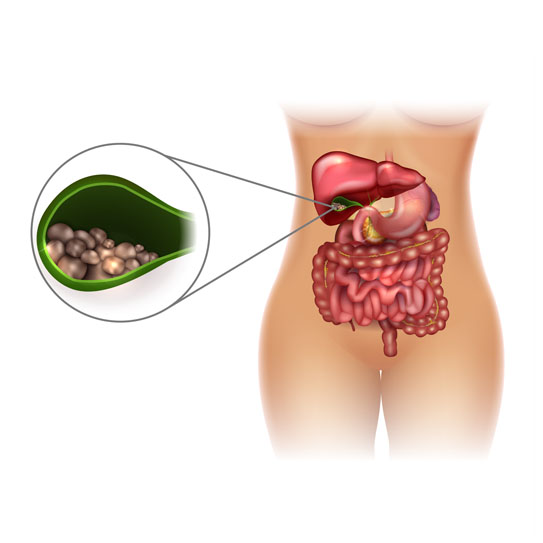
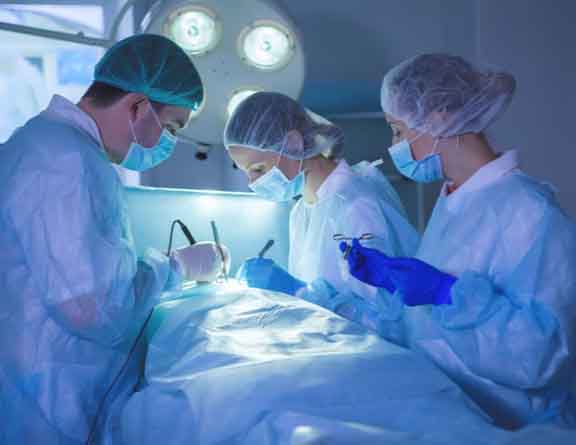
Treatment
During your initial consultation, the gallbladder stones surgeon is likely to check your symptoms physically and know more about the history of gallbladder stones in your family. The doctor will run a physical examination and recommend certain imaging tests to diagnose the gallstones. During the physical examination, the doctor will check the body, and ask about the diet and check for pain in the patient’s abdomen. Tests for diagnosis of gallstones may include:
The only effective treatment for gallbladder stones is cholecystectomy, which means removal of the gallbladder. At Pristyn Care, gallbladder removal is done through the laparoscopic technique or Robotic Laparoscopic Surgery. In laparoscopic gallbladder removal surgery, the gallbladder doctor (who is an expert laparoscopic surgeon) makes a small incision and inserts a laparoscope with a tiny video camera mounted on top and surgical tools. The camera gives the surgeon a detailed and clear view of the abdomen that allows the surgeon to perform the surgery effectively. Laparoscopic gallbladder removal surgery is a highly safe, effective and reliable treatment for gallbladder stones. In addition, the recovery time is much faster, and the incision will practically leave no scar.

H/56, Ground Floor, Sector 51, Near Diamond Crown Banquet Hall, Noida, Uttar Pradesh 201301

No C 65 & 66, Nawada Housing Complex, Nawada, Opposite Pillar No 795, New Delhi, Delhi 110059
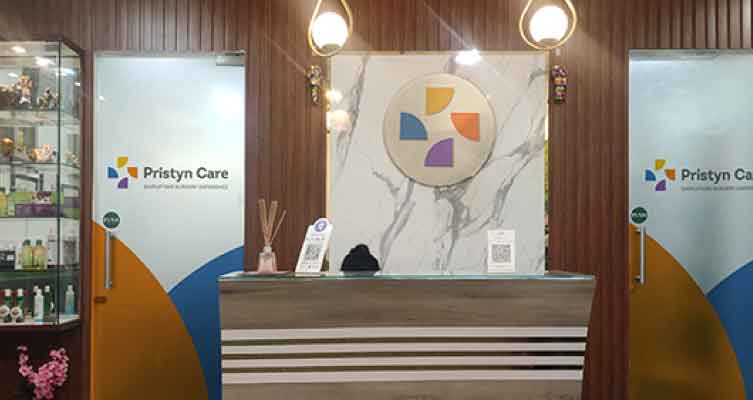
Chamber 1, 306, GF1, Vaishali Extensio, Sector‐05, Vaishali, Ghaziabad, Uttar Pradesh 201010
Pristyncare%20Clinic.webp)
Chamber 1, Sayamed clinic Building no 2742, Second floor pristyn care, Sushant lok phase 1 block C, Sector 43, Gurugram, Haryana 122022
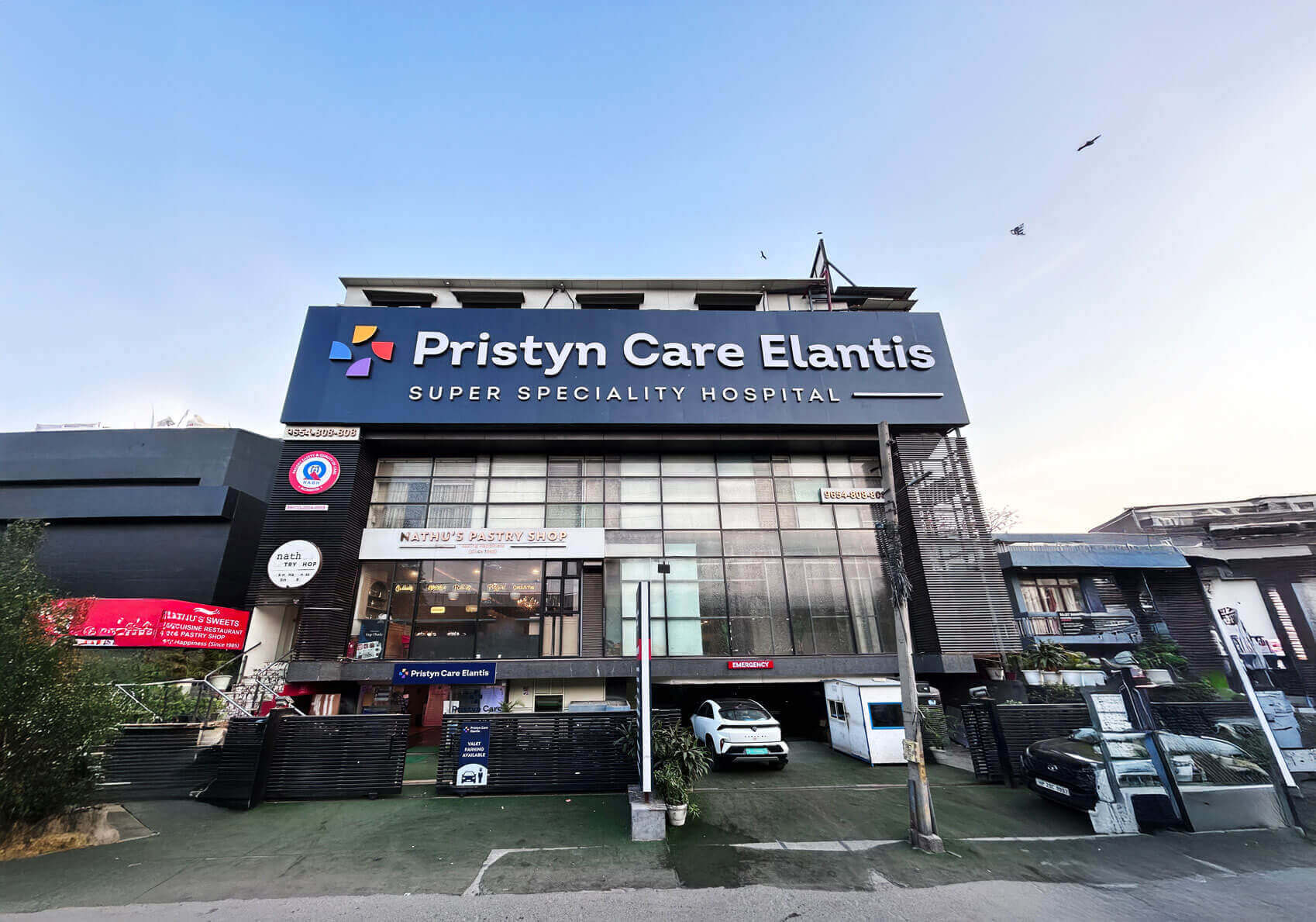

 NABH
NABHPristyn Care Elantis is dedicated to revolutionising surgical care. We combine the latest medical technology with highly skilled professionals and a patient-centric approach to transform the healthcare experience. Our team of doctors at Pristyn Care Elantis, strives to simplify the entire patient journey, ensuring a seamless process from diagnosis through recovery.
We offer specialised treatments across a wide range of medical fields, including proctology, laparoscopic surgery, ENT (ear, nose, and throat), vascular, gynaecology, urology, aesthetics, orthopaedics, ophthalmology, and weight loss solutions.
The Suites & Rooms at Pristyn Care Elantis are designed with your comfort in mind, offering a welcoming ambiance and top-notch amenities to make your stay as pleasant as possible.
Our highly skilled medical team, supported by advanced infrastructure, makes us a trusted choice for comprehensive healthcare solutions.
...Read More
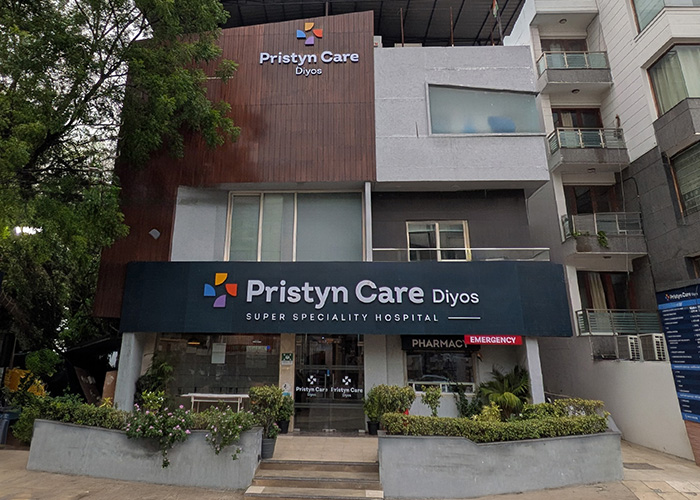

 NABH
NABHPristyn Care Diyos Super-Speciality Hospital is committed to redefining modern healthcare by blending cutting-edge technology with compassionate, patient-first care. Located in the heart of Safdarjung Enclave, South Delhi, our NABH-accredited facility offers advanced treatment solutions across multiple specialties, ensuring superior outcomes and faster recoveries.
Our dedicated team of doctors at Pristyn Care Diyos Hospital aims to streamline the entire patient journey—from consultation to recovery—by providing seamless, end-to-end medical care tailored to each individual’s needs.
We offer specialised medical services across a wide range of fields, including urology and andrology, general and laparoscopic surgery, cosmetic and plastic surgery, gynaecology and urogynaecology, orthopaedics, neuro and spine surgery, ENT (ear, nose, and throat), oncology, internal medicine, and critical care. Our facility also extends home care services for enhanced convenience and continuity of care.
The suites and patient rooms at the Hospital are thoughtfully designed to ensure a comfortable and healing environment, featuring modern amenities, hygienic surroundings, and attentive support for both patients and their attendants.
Supported by a skilled clinical team and world-class infrastructure—including modular operation theatres with HEPA filters, advanced diagnostic labs, and high-end medical equipment— Pristyn Care Diyos Hospital stands as a trusted destination for safe, effective, and personalised healthcare.
...Read More
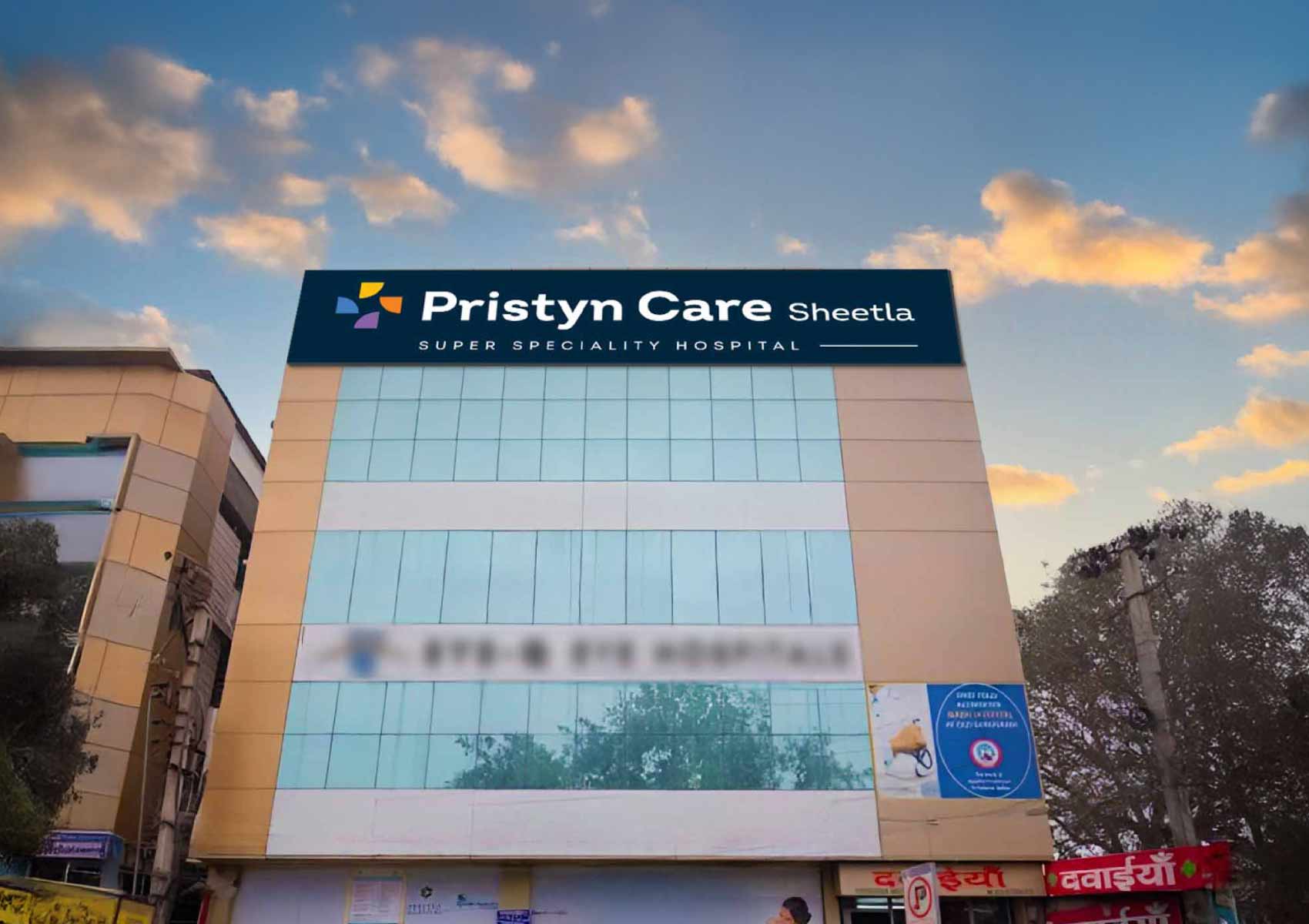

 NABH
NABHPristyn Care Sheetla Hospital in Gurgaon makes quality healthcare more accessible and personal. The hospital offers advanced treatment across various specialties like women’s health, child and neonatal care, etc. and minimally invasive surgery. With 36 well-equipped beds, 3 modern operation theatres, and a dedicated ICU, Pristyn Care Sheetla works with comfort and efficiency. With 90+ experienced doctors and a courteous professional medical team, we ensure clear communication, personalized care, and real results – so you feel supported every step of the way.
...Read More
Best Gallstone Surgery Clinics
At Pristyn Care, we leverage advanced laparoscopic and traditional techniques to remove the gallbladder entirely. The treatment is minimally invasive and the damage to other organs and structures is negligible, along with high success rates.
Our expert gallstone doctors have 10+ years of experience in performing gallbladder removal surgery or cholecystectomy safely. The doctor compiles a personalized treatment plan for each patient.
Pristyn Care team and doctors will stay in touch with you to provide ample support and proper care after surgery. We provide free follow-up consultations to all the patients to ensure they have a smooth recovery.
We accept all health insurance to cover the gallstone treatment cost. No-Cost EMI service is also available for all patients to divide the entire treatment cost into easy installments.
Yes, gallstones can form in both children and adults. Still, the chances of gallstones are higher in middle-aged adults than in younger ones.
The advantages of undergoing gallbladder removal surgery at Pristyn Care are:
You can look for a gallstones doctor in Delhi online or consult with a laparoscopic specialist at Pristyn Care who can guide you through the accurate line of action for treatment.
Yes, gallstones can be cured entirely by laparoscopic surgery. Furthermore, it also reduces the chances of recurrence of gallstones.
Usually, the recovery after gallbladder removal surgery takes more than a week. But with laparoscopic surgery for gallbladder removal in Delhi, only a couple of days are needed to recover after surgery.
Yes. Heartburn is one of the most common symptoms of gallbladder stones. It usually arises after a meal and gets worse when the person bends over or lies down. Sometimes, heartburn may persist several hours after eating.
Yes. It is entirely safe to remove the gallbladder. Doctors usually recommend this when the patient has had repeated gallstone attacks. Thanks to the advanced laparoscopic technique, the gallbladder can be safely removed with minimal complications.
Apple juice for gallstones is considered a good technique to cleanse the gallbladder. The juice can stimulate the bowels and help to empty the bladder correctly
Gallstone is a problem that is related to the body’s ability to break down cholesterol. And there are many things that impact this ability, such as age, gender, weight, hormone imbalance, etc. The people who are more at risk of gallstones are:
Gallbladder stones may not cause any problem for a long time. But if the size of the stones keeps on increasing and they are left untreated, then you may experience the following complications.
| Gallstone Surgery | Complete Recovery Period | Hospital Stay |
|---|---|---|
| ERCP (Endoscopic Retrograde Cholangiopancreatography) | Up to 1 week | Usually outpatient may require a short stay. |
| Gallstone Open Surgery | 6-8 weeks | Varies, typically 2-7 days depending on the procedure. |
| GALLSTONES CBD Calculus | 6 weeks | Varies, typically 2-7 days depending on the procedure. |
The preparation of gallbladder removal surgery doesn’t require extreme measures. Firstly, some pre-operative tests will be performed like blood tests, ECG, X-ray, ultrasound of the gallbladder. The surgeon will prescribe medications if necessary. And most probably, the surgeon will ask you to stop taking aspirin, warfarin, and other blood thinner medicines.
Surgery is needed to remove gallstones from the gallbladder. It can be done via open surgery or laparoscopic surgery. However, the laparoscopic technique is preferred by people because it offers many benefits like:
Apart from all this, when you choose Pristyn Care to undergo laparoscopic gallstone treatment, you get additional benefits like 30% discount on diagnostic tests, single deluxe room, 100% insurance claim, and free follow-ups after surgery.
The food items that you eat on a regular basis have a significant impact on the body. If you eat a healthy and balanced diet and combine it with physical activities, it can lower the risk of gallstone development to almost negligible.
According to experts, the ideal diet for gallstones consists of:
Along with knowing what foods to eat, you should also keep your cravings in check and avoid unhealthy fats, such as desserts and fried foods. Talk to your healthcare provider and ask them to make changes in your diet that will help you avoid gallstones and other health problems as well.
| Sr.No. | Doctor Name | Ratings | Experience | Address | Book Appointment |
|---|---|---|---|---|---|
| 1 | Dr. Pankaj Sareen | 4.6 | 23 + Years | A1/26, adjacent to Green Fields Public School | Book Appointment |
| 2 | Dr. Rakesh Kumar | 4.8 | 19 + Years | No. 142, Avtar Enclave, Paschim Vihar, New Delhi | Book Appointment |
| 3 | Dr Rahul Poddar | 5.0 | 18 + Years | H-56, Sector 51, near Diamond Crown, Noida | Book Appointment |
| 4 | Dr. Piyush Sharma | 5.0 | 15 + Years | 29, Ring Road, Block L, Lajpat Nagar, New Delhi | Book Appointment |
| 5 | Dr. Yanshul Rathi | 4.7 | 14 + Years | 306, GF1, Sector‐04, Vaishali, Ghaziabad | Book Appointment |
| 6 | Dr. Anwar Hussain | 4.6 | 13 + Years | C-65-66, Nawada Housing Complex, New Delhi | Book Appointment |
| 7 | Dr. Amish | 4.6 | 13 + Years | 117, Guru Virjanand Marg, Vikaspuri, Delhi | Book Appointment |
| 8 | Dr. Tushar Goel | 5.0 | 11 + Years | No D83, Sector 26, behind Nithari Police, Noida | Book Appointment |
| 9 | Dr. Daiyapan Ghosh | 4.6 | 22 + Years | New Railway Rd, near Dronoacharya Govt College, Manohar Nagar, Sector 8, Gurugram, Haryana 122001 | Book Appointment |
| 10 | Dr. Nishant Nagpal | 4.6 | 21 + Years | -- | Book Appointment |
| 11 | Dr. Gauranga Saikia | 5.0 | 20 + Years | Plot no. 559, 1st Floor, Bakhtawar Chowk, Netaji Subhash Marg, Sector 39, Gurugram, Haryana 122001 | Book Appointment |
| 12 | Dr. Saurabh Kumar Goyal | 4.6 | 18 + Years | Pristyn Care Diyos, Safdarjung Enclave, New Delhi | Book Appointment |
| 13 | Dr. Manish Kumar Chhabra | 4.6 | 15 + Years | -- | Book Appointment |
| 14 | Dr. Raj Kumar Singh | 4.6 | 12 + Years | Pristyn Care Diyos, Safdarjung Enclave, New Delhi | Book Appointment |
Jasmine Arora
Recommends
My mother underwent laparoscopic gallstone surgery. The recovery was fast and she didn’t even need stitches. Very thankful to the Elantis team
Farhan Qureshi
Recommends
Gallstone pain was ruining my daily life. Pristyn Care suggested laparoscopic gallbladder removal, and it went perfectly. I was home within 24 hours. The hospital is modern, hygienic, and the doctors were extremely professional.
Sneha Kapoor
Recommends
Gallbladder stone se pareshaan thi, but after laparoscopic surgery at Elantis, I feel like a new person. Shukriya Pristyn Care Elantis!
Neha Jain
Recommends
I had a laparoscopic gallbladder surgery done here. The team was extremely professional and ensured I was comfortable throughout. Recovery was quicker than I expected
.svg)
.svg)
.svg)